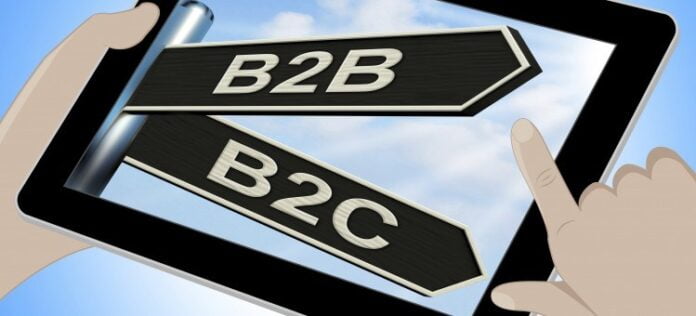With the colossal rise of the Internet in India in the last decade, one new sector of business has stormed its way to the top of industry echelons and etched its name forever in the minds of people. Electronic commerce, or simply eCommerce has captured the imagination of people from all walks of life and seeped into our lives seamlessly. E-commerce entails two sectors, both of which hold equal sway- B2C (Business to Consumer) and B2B (Business to Business). While B2C caters to individuals or everyday consumers, B2B taps into the needs of businesses and small large industries alike.
However, B2C is recognized as a more familiar segment of eCommerce in India, even though its counterpart, or rather new-born cousin, B2B is still gearing up, waiting to up the ante and demand an equal share in India’s surging economy.
Albeit, B2B has recently been hogging the headlines over the past couple of years thanks to booming industrialization, expansionist tendencies and a steady influx of FDI in its coffers. Furthermore, B2B is expected to reach the $700 billion threshold by 2020. Currently, both B2B and B2C are slugging it out quietly to take up the mantle of E-commerce. And, the difference between the two pillars of E-commerce only gets deeper as we dig up some key pointers. Here are some insights-:
#1. Long-term Relationship
After a strong foundation has been laid in terms of trust, B2B sees more traction from its customers who are 70% more likely to return to the website in the near future. Whereas, the B2C segment is replete with hordes of similar websites that sell products at somewhat similar prices. Thus, a typical B2C consumer is allured by cheaper prices and can shift their allegiance squarely based on price.
#2. Buyer Behavior
While emotional factors account for a good proportion of B2C purchases, B2B purchasing decisions are rational and based more on the lines of cost and use, productivity, quality and task orientation. Besides, B2B purchasers such as SMEs splurge more money as the buying process tends to be costlier and time-consuming.
#3. Expertise
B2B clientele seeks the utmost expertise and efficiency, in stark contrast to the B2C consumer audience that is rooting for quick deals with a dash of entertainment. The B2B audience wants to be directly catered to by the sales and marketing team and wants thorough information on the products that can range from industrial tools to lab equipment.
#4. Profits
Globally, the majority of B2C eCommerce companies, despite being operational for more than 5 years tend to report low profitability. The Gross Merchandise Volume or, GMV for the B2C segment in India was pegged at around $16 billion in 2015. On the other hand, B2B eCommerce companies are more profitable with greater GMV values.
#5. Minimum order limit
On a B2C portal, a buyer is not bogged down by constraints such as a minimum order limit. They can simply hop onto the portal and buy anything they have set their sights on without fretting about the minimum order limit. Whereas, on a B2B website, you have to place a minimum order to complete your transaction.
#6. Bulk Vs Retail
This one boils down to the tastes of the customer. While B2B customers tend to be more inclined towards making bulk orders, B2C enthusiasts prefer purchasing individual items. After all, in B2C an individual is buying on behalf of himself and is the sole end user.
#7. Delivery
Since B2B is a relatively new phenomenon in India, it has faced some glitches on the logistics front. It takes a humongous amount of time for the shipment of goods to the end user via a B2B marketplace due to roadblocks such as Waybill, et al. Other essential factors that determine the outcome of a B2B transaction are order size and inventory management. Meanwhile, B2C has an established mechanism that is well-oiled to tackle any discrepancies that might crop up during the delivery process.
Despite differences galore, B2C and B2B can mutually co-exist in the safe environs of the Indian E-commerce ecosystem and propel it to unforeseen heights. In so far as the competition between the two is concerned, only time beckons who steal a march in the long run!

